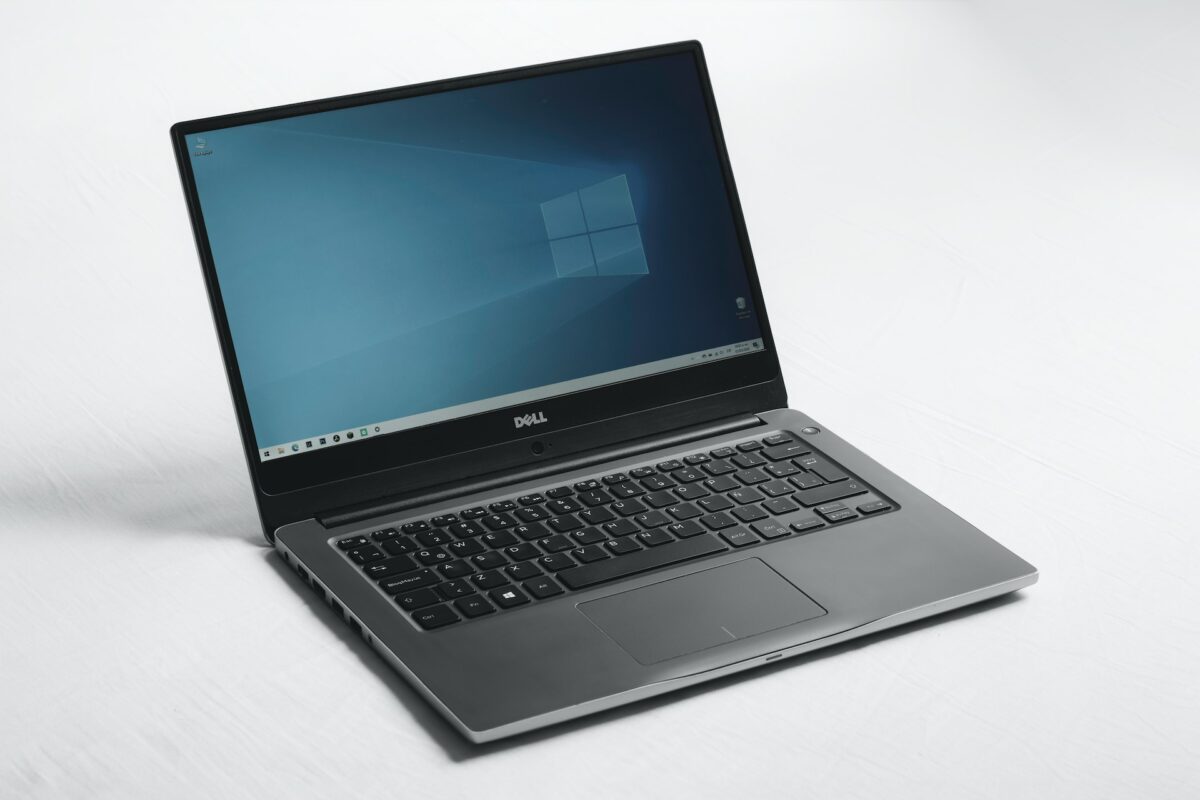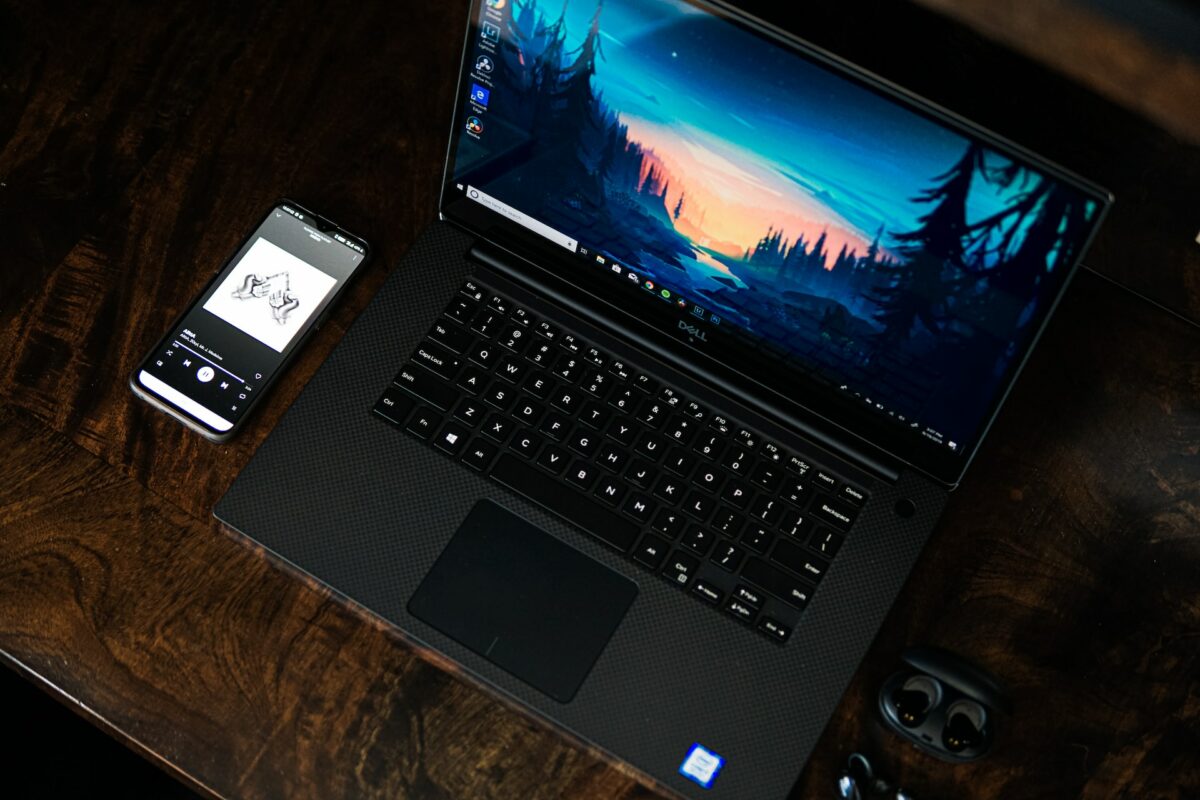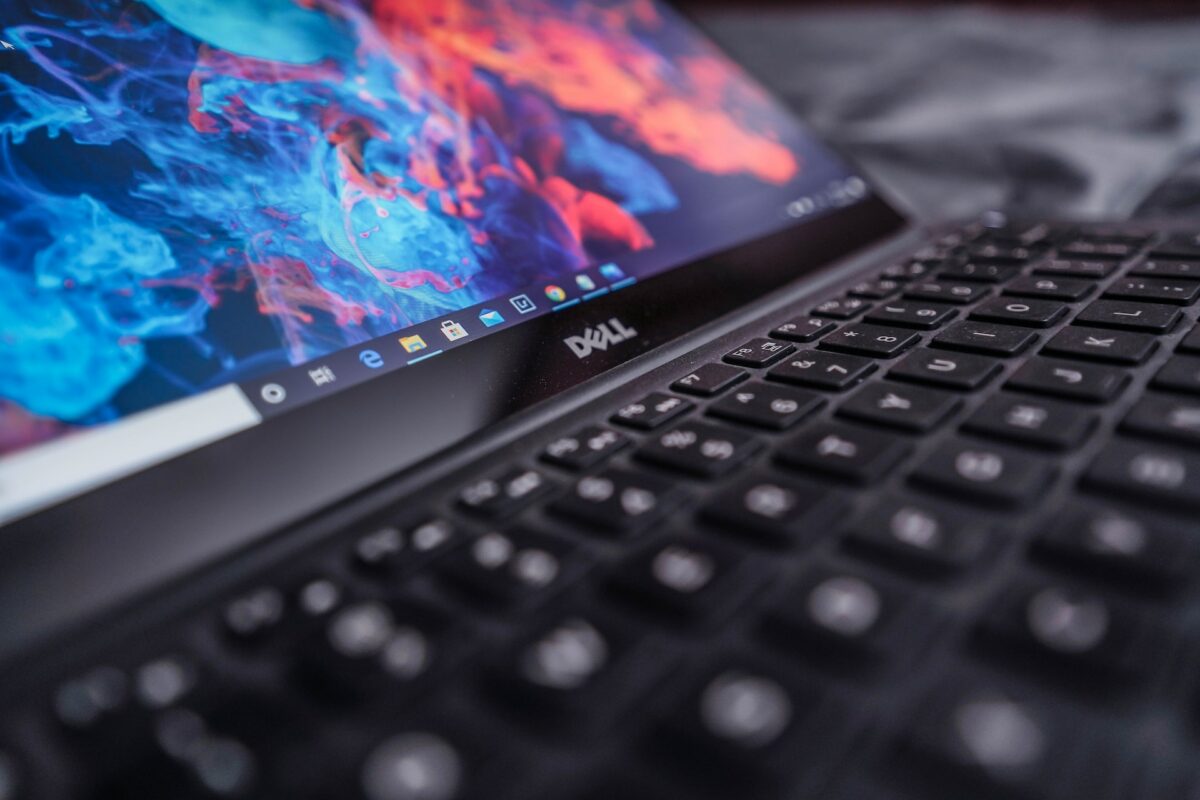Are you having trouble with your Dell keyboard?
Is it locked and you can’t type anything?
Don’t worry, there are several ways to unlock your Dell keyboard but how to unlock Dell keyboard?
In this article, we’ll provide you with some simple and effective methods to unlock your keyboard and get back to typing.
One of the most common ways to unlock your Dell keyboard is to restart your laptop.
This simple method can help you fix many issues with your laptop, including a locked keyboard.
Another method is to unlock the Num key on your keyboard.
If that doesn’t work, you can try pressing the Fn key and the Num key at the same time.
If none of these methods work, you can contact customer support for assistance.
In this article, we’ll explore these methods in more detail and provide you with step-by-step instructions to help you unlock your Dell keyboard.
Whether you’re a beginner or an experienced user, these methods are easy to follow and can help you get your keyboard working again in no time.
So, let’s get started and unlock your Dell keyboard!
Post Contents
- 1 Understanding the Dell Keyboard
- 2 Causes of Keyboard Lock
- 3 How to Unlock Dell Keyboard
- 4 Using Restart as a Solution
- 5 Adjusting Keyboard Settings
- 6 Utilizing On-Screen Keyboard
- 7 Troubleshooting Dell Keyboard Issues
- 8 Understanding Other Laptops’ Keyboards
- 9 Managing External Keyboard
- 10 Updating Device Drivers
- 11 Dealing with Touchpad and Scroll Lock
- 12 Using Dell Bluetooth Keyboard
- 13 Key Takeaways
Understanding the Dell Keyboard

If you’re using a Dell laptop or desktop, you’re likely familiar with the keyboard.
However, it’s important to understand the layout and functionality of the keyboard to troubleshoot any issues you may encounter.
The Dell keyboard typically has a standard layout with a few additional keys and features.
Here are some key things to know:
- The function (Fn) key is located in the bottom left corner of the keyboard and is used in combination with other keys to access additional functions.
- The Windows key is located on the bottom row of the keyboard and is used to access the Start menu and other Windows-specific functions.
- The Dell keyboard may also have additional multimedia keys for controlling volume, brightness, and other settings.
- The Num Lock key is used to toggle between the standard letter keys and the number pad located on the right side of the keyboard.
It’s important to note that some Dell keyboards may have slight variations in layout and functionality, so it’s always a good idea to refer to the user manual or Dell’s support website for specific information.
If you’re experiencing issues with your Dell keyboard, such as keys not responding or the keyboard being locked, there are several troubleshooting steps you can take.
These include restarting your computer, updating keyboard drivers, and checking for any physical damage or debris in the keyboard.
By understanding the layout and functionality of your Dell keyboard, you can better troubleshoot any issues and make the most of its features.
Causes of Keyboard Lock
If your Dell keyboard is locked, it can be frustrating and affect your productivity.
However, understanding the possible causes can help you troubleshoot the issue and unlock your keyboard.
Here are some of the common causes of keyboard lock on Dell laptops:
- Fn Lock: The Fn key is a function key on your keyboard that lets you change keyboard settings or access various features. If the Fn lock is on, it can cause your keyboard to lock up. This can happen accidentally if you or someone else pressed the key.
- Num Lock: The Num Lock key is another function key that can cause your keyboard to lock up. If the Num Lock key is on, your keyboard will only type numbers instead of letters. This can be confusing and frustrating if you don’t know how to turn it off.
- Physical Damage: If your keyboard has suffered physical damage, it can cause it to lock up or stop working altogether. This can happen if you accidentally spilled liquid on it, dropped it, or if it’s been exposed to extreme temperatures.
- Driver Issues: If your keyboard driver is outdated or corrupted, it can cause your keyboard to lock up. This can happen if you haven’t updated your driver in a while or if you installed a new program that conflicts with your keyboard driver.
- Battery Issues: If your wireless keyboard is not working, it could be due to dead batteries. Make sure to check the batteries and replace them if necessary.
By understanding the possible causes of keyboard lock on Dell laptops, you can troubleshoot the issue and unlock your keyboard quickly.
How to Unlock Dell Keyboard
If your Dell keyboard is locked and you can’t type anything, don’t worry, there are several ways to unlock it.
Here are some methods you can try:
1. Restart your laptop
Sometimes, restarting your laptop can fix the keyboard issue.
To do this, click on the Windows Start menu, then click on the power icon and select “Restart”.
Wait for your laptop to restart and check if the keyboard is working again.
2. Unlock the Fn key
If the Fn key is locked, you won’t be able to use the function keys.
To unlock the Fn key, press the Fn key and the NumLock key at the same time.
If your keyboard doesn’t have a NumLock key, press the Fn key and the Esc key at the same time.
3. Update your keyboard driver
Outdated or corrupted keyboard drivers can cause keyboard issues, including being locked.
To update your keyboard driver, follow these steps:
- Click on the Windows Start menu and type “Device Manager” in the search bar.
- Click on “Device Manager” to open it.
- Expand the “Keyboards” category.
- Right-click on your Dell keyboard and select “Update driver”.
- Follow the instructions to update the driver.
4. Run a system scan
Running a system scan can help identify and fix any issues that may be causing your keyboard to be locked.
To run a system scan, follow these steps:
- Click on the Windows Start menu and type “Security and Maintenance” in the search bar.
- Click on “Security and Maintenance” to open it.
- Click on “Maintenance” and then click on “Start maintenance”.
- Wait for the scan to complete and check if the keyboard is working again.
5. Contact customer support
If none of the above methods work, you can contact Dell customer support for assistance.
They can help you diagnose and fix the issue with your keyboard.
By following these methods, you should be able to unlock your Dell keyboard and start typing again.
Using Restart as a Solution
If your Dell laptop keyboard is locked, the first solution you should try is to restart your laptop.
Restarting your laptop can help to solve the issue as it can reset any settings that may be causing the problem.
Here are some steps to follow when restarting your Dell laptop:
- Click on the Start Menu icon located at the bottom left corner of your screen.
- Click on “Shut down” to turn off your laptop.
- Wait for a few seconds until your laptop is completely turned off.
- Press the power button to turn on your laptop.
- Wait for a few minutes for your laptop to boot up completely.
After your laptop has restarted, try typing on your keyboard to see if it is working.
If the keyboard is still locked, you can try some of the other solutions provided in this article.
It is important to note that restarting your laptop can fix a variety of issues, not just a locked keyboard.
If you are experiencing other problems with your laptop, such as slow performance or freezing, restarting your laptop may also help to solve these issues.
In addition, it is recommended to periodically restart your laptop to ensure it is running smoothly.
Restarting your laptop can help to clear any unnecessary processes or programs that may be running in the background, which can help to improve performance.
Adjusting Keyboard Settings

If your Dell keyboard is not working properly, you may need to adjust your keyboard settings.
Here are a few settings that you can adjust to help unlock your Dell keyboard:
Filter Keys
Filter Keys is a setting that can help you control the keyboard repeat rate and ignore repeated keystrokes.
If you are having trouble with your Dell keyboard, you may want to turn on Filter Keys to help reduce accidental keystrokes.
To turn on Filter Keys, follow these steps:
- Go to Start > Settings > Ease of Access > Keyboard.
- Turn on the “Use Filter Keys” toggle switch.
Once you turn on Filter Keys, you can adjust the repeat rate and delay by clicking on “Filter Keys Settings.”
Sticky Keys
Sticky Keys is a setting that allows you to press one key at a time for keyboard shortcuts.
If you are having trouble with your Dell keyboard, you may want to turn on Sticky Keys to help reduce accidental keystrokes.
To turn on Sticky Keys, follow these steps:
- Go to Start > Settings > Ease of Access > Keyboard.
- Turn on the “Use Sticky Keys” toggle switch.
Once you turn on Sticky Keys, you can adjust the settings by clicking on “Sticky Keys Settings.”
Other Settings
There are other keyboard settings that you can adjust to help unlock your Dell keyboard.
For example, you can adjust the keyboard repeat delay, turn off the Caps Lock key, or adjust the keyboard layout.
To adjust these settings, follow these steps:
- Go to Start > Settings > Devices > Typing.
- Adjust the settings as needed.
By adjusting your keyboard settings, you can help unlock your Dell keyboard and improve your overall typing experience.
Utilizing On-Screen Keyboard
If you’re having trouble with your Dell keyboard, the on-screen keyboard can be a useful tool to help you navigate your computer.
Here’s how to use it:
Pairing with Wireless Keyboard
If you have a wireless keyboard that’s not working, you can use the on-screen keyboard to pair it.
First, make sure that your wireless keyboard is turned on and in range of your computer.
Then, follow these steps:
- Click on the Ease of Access icon in the bottom right corner of your screen.
- Click on “On-Screen Keyboard”.
- Click on the “Options” button.
- Check the box next to “Use click sound”.
- Click on the “Apply” button.
- Click on the “OK” button.
Now, you should be able to use the on-screen keyboard to pair your wireless keyboard.
Note that this method may not work for all wireless keyboards, and you may need to consult the user manual for your specific keyboard for more detailed instructions.
Troubleshooting Dell Keyboard Issues
If you are experiencing issues with your Dell keyboard, such as unresponsiveness or keys not working, there are a few things you can try to troubleshoot the problem.
First, check if the keyboard is properly connected to your computer.
If it is a wired keyboard, ensure that the cable is securely plugged into the USB port.
If it is a wireless keyboard, make sure the batteries are properly inserted and that the keyboard is turned on.
If the keyboard is properly connected and still not working, try restarting your computer.
This can often fix temporary glitches that may be causing the issue.
If restarting doesn’t work, you can try updating your keyboard drivers.
Go to the Device Manager in your Windows settings and locate the keyboard.
Right-click on it and select “Update driver.”
If none of these solutions work, you may need to consider replacing the keyboard or seeking professional help.
Remember, it’s always important to properly troubleshoot an issue before jumping to conclusions or making unnecessary purchases.
By following these steps, you can potentially save time and money while getting your Dell keyboard back to working order.
Understanding Other Laptops’ Keyboards
If you have experience using other laptops, you may notice that the keyboard layout and function keys differ from one brand to another.
For instance, HP laptops have a different keyboard layout compared to Dell laptops.
Therefore, understanding the keyboard layout and function keys of your laptop is essential in unlocking your keyboard.
HP laptops, for example, have a unique function key layout that can be confusing if you are not familiar with it.
The function keys on HP laptops are usually labeled F1 to F12, and they perform different tasks depending on the software or application you are using.
Some of the common function keys on HP laptops include:
- F1: Opens the Help menu for the current application
- F2: Renames the selected file or folder
- F3: Opens the search feature
- F4: Displays the address bar list in Windows Explorer
- F5: Refreshes the current page or window
- F6: Cycles through the screen elements in a window or on the desktop
- F7: Activates the spell-check feature in Microsoft Office
- F8: Displays the Windows startup menu
On the other hand, some HP laptops have an additional row of shortcut keys that perform specific tasks.
These keys are usually located above the function keys and are labeled with icons such as volume controls, mute, and Wi-Fi.
If you are using an HP laptop and your keyboard is locked, you can try unlocking it by pressing the function key (Fn) and the F7 key simultaneously.
This combination unlocks the keyboard and allows you to use it normally.
Other laptops, such as Lenovo and Asus, also have different keyboard layouts and function keys.
Therefore, it is essential to read the manual or search online for the specific function keys and shortcuts of your laptop.
Managing External Keyboard
If you’re using an external keyboard with your Dell laptop, you might encounter some issues when trying to unlock it.
Here are a few tips on how to manage your external keyboard and unlock it if it becomes locked.
Check Your Key Combination
If you’re using an external keyboard, you might need to use a different key combination to unlock it.
The most common key combination is the Num Lock key.
If your external keyboard has a Num Lock key, press it to unlock the keyboard.
Update Your Drivers
If your external keyboard is still locked, it might be because of outdated drivers.
Updating your drivers can often fix this issue.
To update your drivers, go to the Dell website and download the latest drivers for your keyboard.
Try a Different USB Port
If your external keyboard is still not working, try plugging it into a different USB port.
Sometimes, USB ports can become damaged or stop working, which can cause issues with external devices.
Check Your Batteries
If your external keyboard is wireless, check the batteries.
If the batteries are low, your keyboard might not work properly.
Replace the batteries and try again.
Use a Different Keyboard
If all else fails, try using a different external keyboard.
Sometimes, keyboards can become damaged or stop working properly, and the only solution is to replace them.
By following these tips, you should be able to manage your external keyboard and unlock it if it becomes locked.
Updating Device Drivers
Updating device drivers is a crucial step in ensuring that your Dell keyboard functions properly.
Device drivers are software programs that allow your computer to communicate with your keyboard and other devices.
Without the correct device drivers, your keyboard may not work correctly, or you may experience other issues.
To update your device drivers, you can use the Dell Support website.
The website will detect your computer’s model and operating system and provide you with the latest drivers available.
Here are the steps to follow:
- Go to the Dell Support website.
- Enter your computer’s service tag or select your computer’s model from the list.
- Select “Drivers & Downloads” from the menu.
- Select the operating system you are using.
- Find the keyboard driver you want to update and click “Download.”
- Follow the instructions to install the driver.
It is important to note that you should only download drivers from the official Dell website.
Downloading drivers from other sources can lead to compatibility issues or malware infections.
In addition to updating your keyboard driver, you should also update other device drivers on your computer.
This includes drivers for your mouse, touchpad, and other input devices.
Updating these drivers can improve the performance of your computer and ensure that all of your devices work correctly.
Dealing with Touchpad and Scroll Lock
If you are having trouble with your Dell keyboard, it is essential to know how to deal with touchpad and scroll lock issues.
Here are some tips to help you get started:
Touchpad
If your touchpad is not working correctly, there are a few things you can do to fix it.
Here are some options:
- Check if the touchpad is enabled. You can do this by going to the Control Panel, selecting Mouse, and then clicking on the Device Settings tab. From there, you can check if the touchpad is enabled or disabled.
- Restart your computer. Sometimes, restarting your computer can fix touchpad issues.
- Update your touchpad driver. You can do this by going to the Dell website and searching for the latest touchpad driver for your device.
Scroll Lock
If you are having trouble with scroll lock, here are some tips to help you resolve the issue:
- Check if your keyboard has a scroll lock key. If it does, press it to turn off scroll lock.
- If your keyboard does not have a scroll lock key, you can turn off scroll lock in Windows. To do this, go to Start > Settings > Ease of Access > Keyboard. From there, you can turn off scroll lock.
- If you are using a Dell laptop, you can turn off scroll lock by holding down the ScLk, Slk, or ScrLck key for about five seconds.
By following these tips, you should be able to deal with touchpad and scroll lock issues on your Dell keyboard.
Using Dell Bluetooth Keyboard
If you have a Dell Bluetooth keyboard, you can connect it to your computer wirelessly.
This allows you to work more comfortably and without the clutter of wires.
Here are some tips for using your Dell Bluetooth keyboard:
Pairing your keyboard
Before you can use your Dell Bluetooth keyboard, you need to pair it with your computer.
To do this, follow these steps:
- Turn on your keyboard and make sure it is in pairing mode.
- On your computer, go to the Bluetooth settings and turn on Bluetooth.
- Click “Add a device” and wait for your computer to detect your keyboard.
- Click on your keyboard when it appears in the list of devices.
- Follow the on-screen instructions to complete the pairing process.
Using the numlock key
The numlock key on your Dell Bluetooth keyboard allows you to use the number pad on the right side of the keyboard.
To turn on the numlock key, press the “Num Lock” button.
When the numlock key is on, the LED indicator on your keyboard will light up.
Troubleshooting
If you are having trouble using your Dell Bluetooth keyboard, try the following:
- Make sure your keyboard is turned on and in range of your computer.
- Check that your keyboard is paired with your computer.
- Try restarting your computer.
- Check that the batteries in your keyboard are not low.
By following these tips, you can enjoy using your Dell Bluetooth keyboard with ease.
Key Takeaways
In summary, unlocking your Dell keyboard can be done in several ways, including restarting your laptop, unlocking the Fn key, doing a system scan, updating your keyboard driver, optimizing your computer’s system, and replacing batteries and checking keyboard connection.
Here are some key takeaways to keep in mind:
- Restarting your laptop is the simplest way to unlock your Dell keyboard. If this does not work, you can try other methods.
- Unlocking the Fn key is another way to unlock your Dell keyboard. This is useful if you accidentally locked your keyboard by pressing the Fn key and another key simultaneously.
- Doing a system scan can help you detect and fix any issues that are causing your Dell keyboard to lock. You can use the built-in Windows Defender or other third-party antivirus software to perform a system scan.
- Updating your keyboard driver is important to ensure that your Dell keyboard works properly. You can download the latest driver from the Dell website or use a driver updater tool.
- Optimizing your computer’s system can help improve its performance and prevent issues like keyboard locking. You can use built-in Windows tools like Disk Cleanup and Disk Defragmenter to optimize your system.
- If your Dell keyboard is wireless, you should check the batteries and connection to make sure they are not the cause of the problem.
By following these tips, you can easily unlock your Dell keyboard and get back to using your laptop as normal.






























